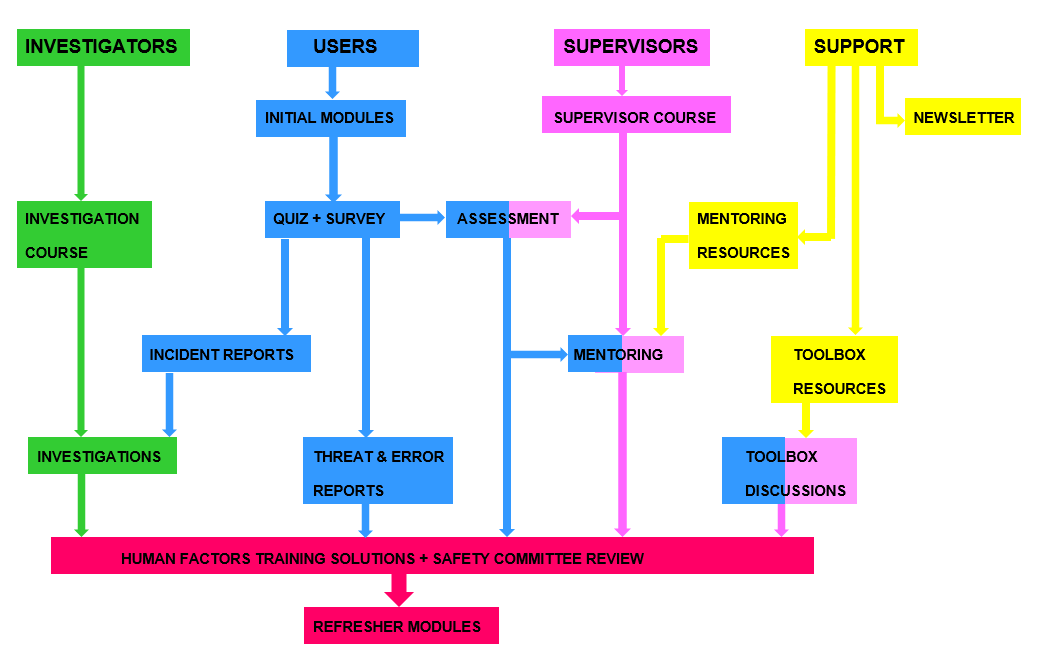1. Fixed Wing Pilots
- Introduction
- Information Acquisition and Processing
- Situational Awareness
- Automation
- Communication
- Decision making
- Health, Fatigue and Stress
- Teamwork and Leadership
- Threat and Error Management
- Workload Management
- The Cockpit Environment
2. Rotary Wing Pilots
- Introduction
- Information Acquisition and Processing
- Situational Awareness
- Automation
- Communication
- Decision making
- Health, Fatigue and Stress
- Teamwork and Leadership
- Threat and Error Management
- Workload Management
- The Cockpit Environment
3. Maintenance Engineers
- Introduction
- Communication
- Decision Making
- Health, Fatigue and Stress
- Information Acquisition and Processing
- Teamwork and Leadership
- Situational Awareness
- Threat and Error Management
- Workload Management
- The Maintenance Environment
4. Ground staff
- Introduction
- Workload Management
- Teamwork
- Awareness
- Communication
- Threat and Error Management
- Health
- The Ground Environment
5. Cabin Crew
- Introduction
- Situational Awareness
- Communication
- Decision making
- Health, Fatigue and Stress
- Teamwork and Leadership
- Threat and Error Management
- Workload Management
- The Cabin Crew Environment
6. Flying Instructors and Examiners
- Introduction
- Safety Incident review
- Fatigue
- Stress
- Alcohol and Drugs
- Communication
- Teamwork
- Leadership
- Situational Awareness
- Decision making
- Threat and Error Management
- Airmanship
- The Instructor Environment
7. Security Personnel
- Introduction
- Information Acquisition and Processing
- Teamwork
- Awareness
- Communication
- Threat and Error Management
- Health
